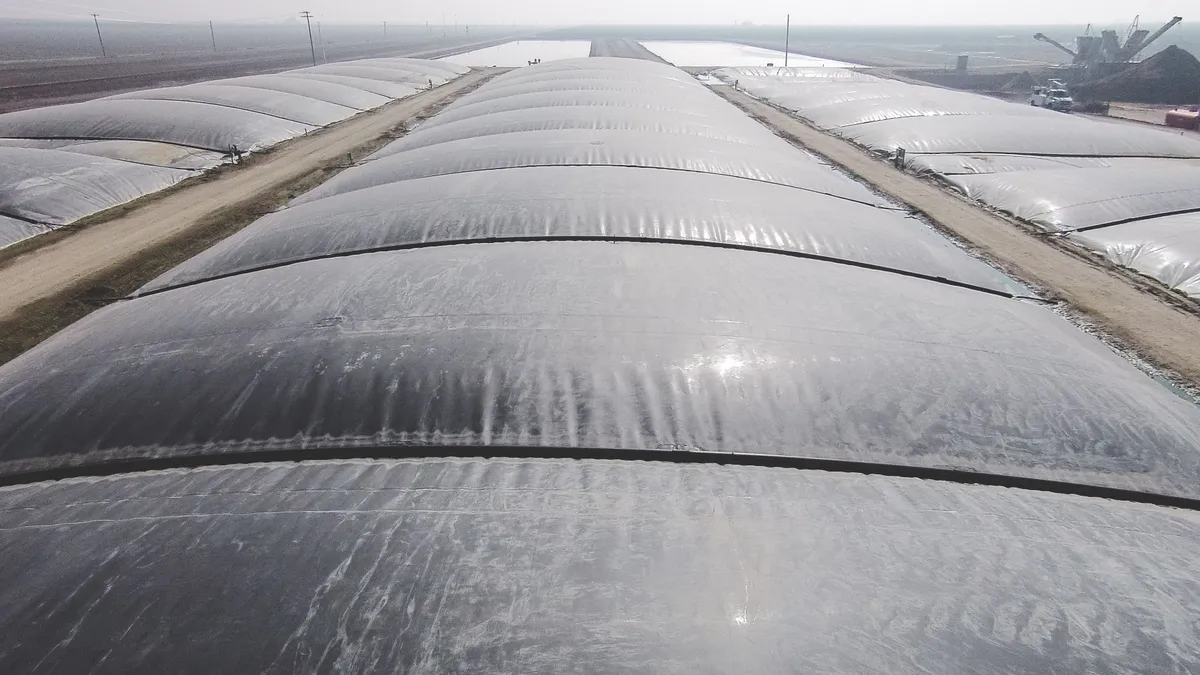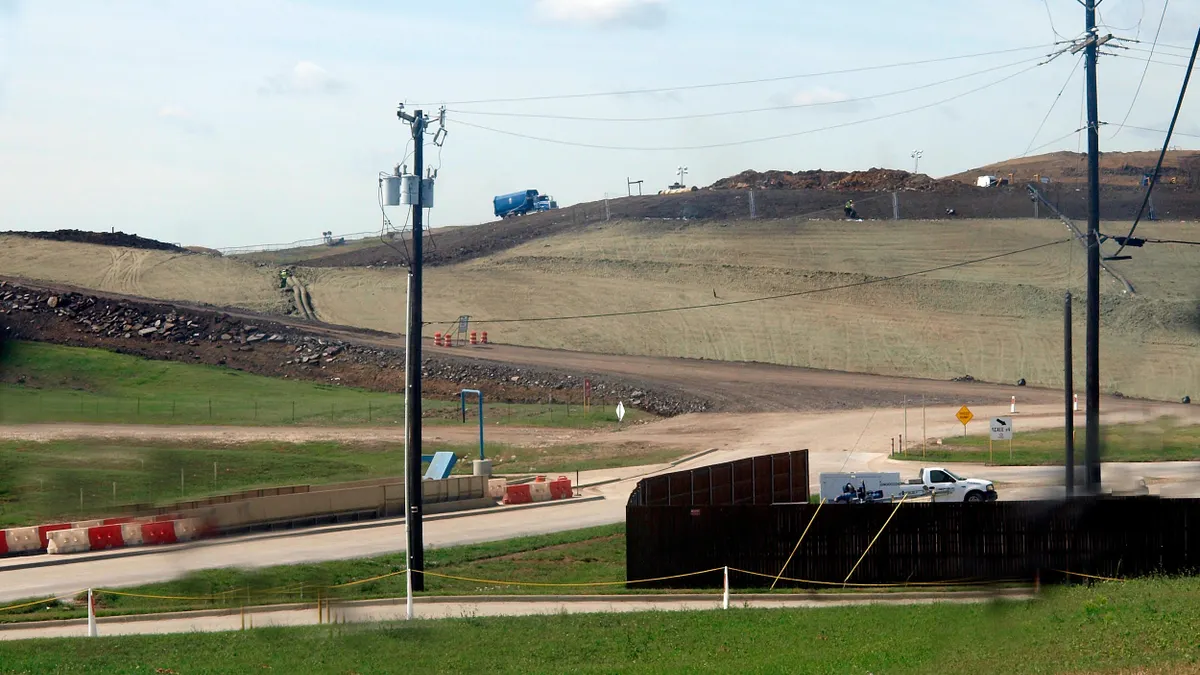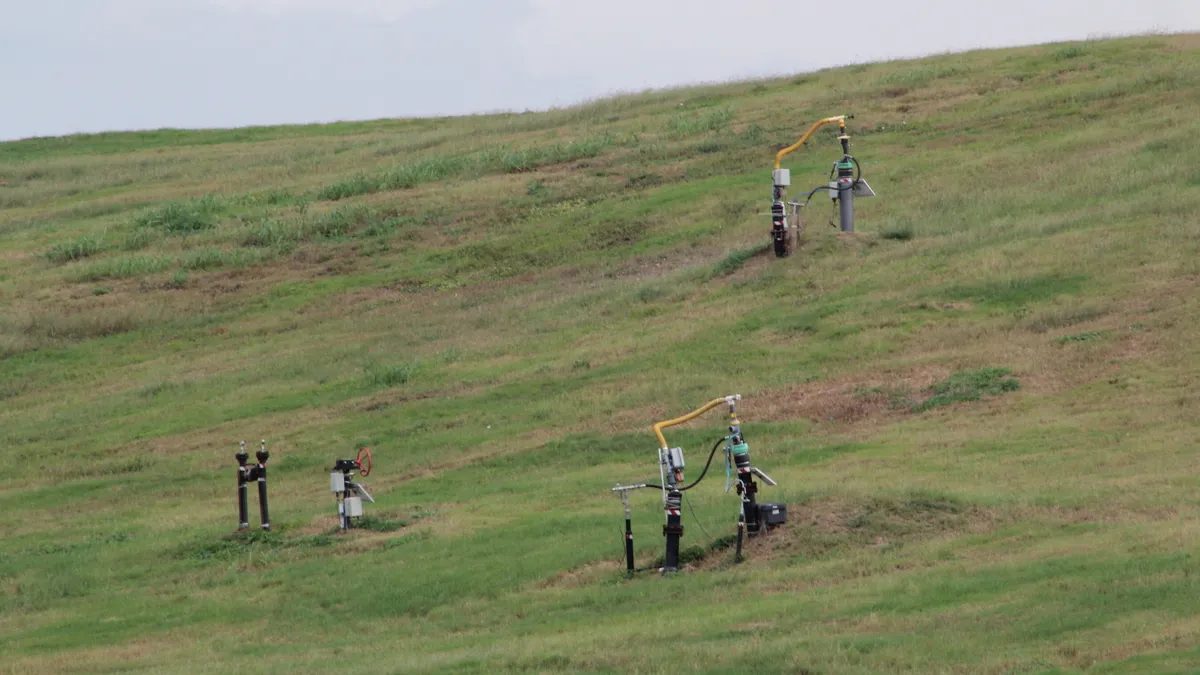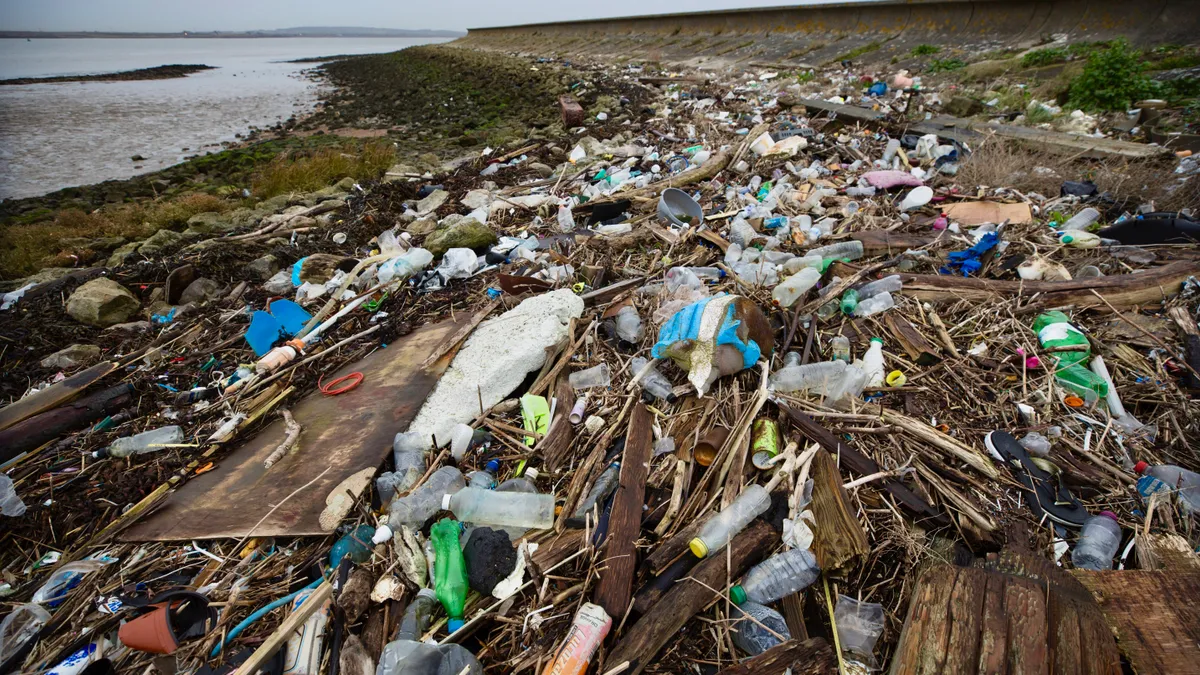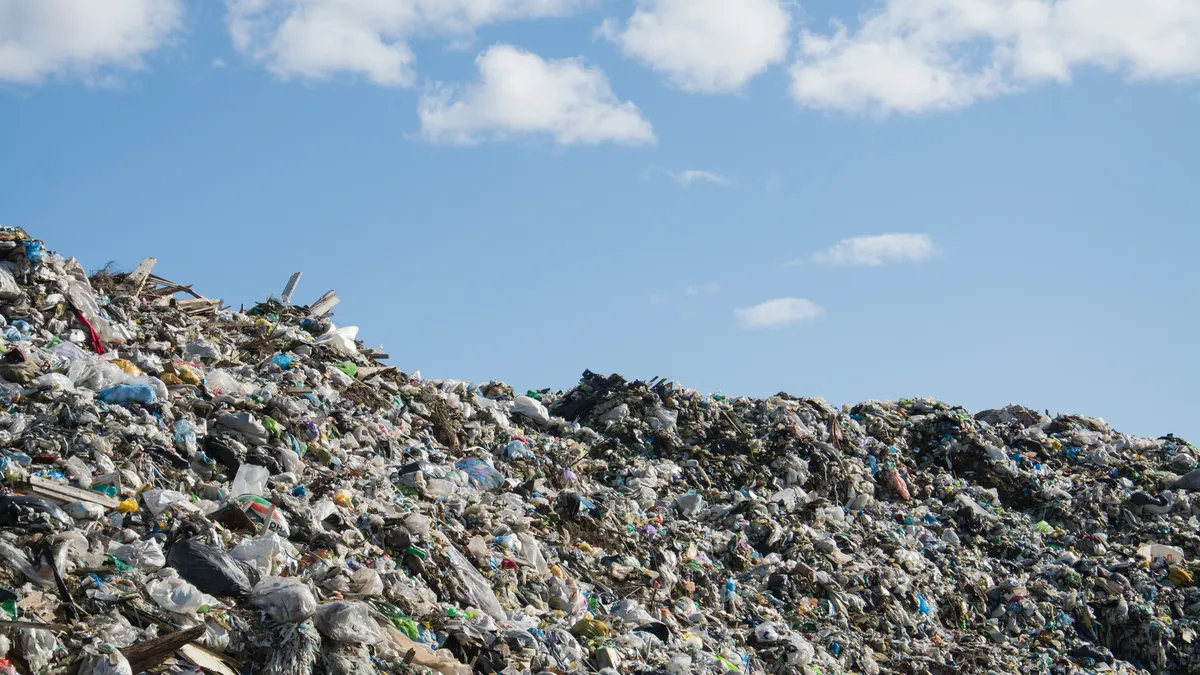The U.S. EPA's updated its interim guidance for the tricky problem of how to dispose of PFAS waste has boosted interest in incineration, one of the agency's sanctioned disposal methods. But research is still lacking on the pathways and effects of combustion byproducts.
PFAS, a class of persistent, human-made chemicals known as per- and polyfluoroalkyl substances, have contaminated soil and groundwater across the country. Some types of PFAS have been linked to a range of serious health issues, including testicular and kidney cancer, liver damage, immune suppression, birth defects, preeclampsia and increased cholesterol.
The need to get rid of PFAS waste is increasingly necessary as the agency moves to regulate the chemicals on multiple fronts. It's also a matter of growing public concern. A 2023 analysis by Public Employees for Environmental Responsibility, an advocacy group, found that industries in the U.S. disposed of at least 60 million pounds of PFAS waste over the past five years.
The durability of these “forever chemicals” — one of the very qualities that makes them so effective in repelling water, stains and heat — is also what makes them so difficult to destroy, said Junli Wang, a postdoctoral researcher at University of California, Riverside who studies PFAS disposal methods.
“The carbon-fluorine bond is the strongest bond in organic chemistry, which makes PFAS very stable, and it can resist many treatment methods,” said Wang. PFAS’ resistance to heat, which made it a key ingredient in aqueous film-forming foam, means that it must be heated at high temperatures before it will begin to break down.
Like its 2020 predecessor, EPA’s updated destruction guidance identified three “available and effective” methods: thermal treatment, landfills and underground injection. The guidance is intended to help entities with PFAS waste determine the best option for getting rid of the harmful material, with the aim of “keeping PFAS out of the environment,” according to the agency. PFAS waste can include textiles, water treatment residuals used to remove the chemicals, AFFF and other types of materials.
EPA recently said it decided to retain thermal treatment as an option because research published since the previous guidance, issued in 2020, suggests that certain technologies are becoming more effective at destroying PFAS and “minimizing releases or exposures” — under the right conditions. The agency said that some hazardous waste combustors and granular activated carbon reactivation units meet the criteria for these conditions, but cautioned that “uncertainties remain.”

The state of the science
An expanding body of research is starting to reveal which operating conditions are the most conducive to destroying PFAS.
A 2022 review led by Wang found that the most effective way to incinerate PFAS involves a two-step process. First, the PFAS-contaminated waste is fed into a main combustion chamber, where the compounds partially degrade. Then the resulting gaseous byproducts go to a secondary chamber called the afterburner, which operates at high temperatures — at least 950 degrees Celsius, or 1,742 degrees Fahrenheit. The gases can burn for just a few seconds, a step called residence time.
A newly published review paper looked at additional studies conducted after the 2022 review. This analysis, which was conducted by EPA scientists and university researchers, involved analyzing seven laboratory studies and 18 commercial or pilot-scale facilities. It found that PFAS can be effectively destroyed (~99.99 %) in thermal treatment systems operating above 850 degrees C, or 1,562 F. This was slightly lower than the 2022 review study found. Efficiency also depends on the combustion design and feedstock, the authors noted.
But even the most efficient combustion processes can produce emissions, and few studies have been done on these byproducts. “People still don't know what those PFAS are transformed into” during the incineration process, Wang said. “There are still fluorine products that we still don't know where they go.”
Since PFAS is in so many products that end up discarded, it’s likely that incineration facilities have been treating PFAS for decades, whether aware of it or not. That means these combustion byproducts may have escaped into the air for decades as well, said Kyla Bennett, director of science policy for Public Employees for Environmental at PEER and a former EPA employee.
“We don't know what is in those residuals,” said Bennett. “We can only test for about 70 to 100 PFAS. We need to figure out what's coming out of those stacks.”
EPA’s recent guidance also said it’s still an open question whether incomplete combustion at lower temperatures, such as those many municipal waste combustors use, produces harmful air emissions. There are no federal limits for PFAS in air emissions.
A 2023 pilot study supported by the agency looked at the relationship between destruction efficiency and products of incomplete combustion (PICs) for AFFF. The destruction efficiency was greater than 99.99% for the quantifiable PFAS in several different combustion environments below 1,000 degrees C, or 1,832 F, but the researchers found “emission concentrations of several volatile PFAS.” The study used both the OTM-45 measurement protocol, and the newer OTM-50 protocol.
Even for high-temperature incinerators, uncertainty persists around whether they emit PICs.
In its guidance, EPA notes that tests at Clean Harbors’ Aragonite, Utah, facility “appear to demonstrate that the facility’s primary objective was met” — that is, to show that high-temperature incineration effectively destroys PFAS in waste during normal operating conditions.
But the tests, which used the OTM-45 protocol, did not measure what ended up in the stack. “[T]hese tests did not collect data to fully support demonstration of adequate destruction as the production of PICs were not evaluated due to methodology limitations,” EPA noted.
EPA’s latest analytical test method, OTM-50, aims to overcome those limitations by improving data collection for PICs.
Executives from Clean Harbors and Veolia, both of which are building new hazardous waste incinerators this year, said at WasteExpo's investor summit on May 6 that they are confident they can meet the OTM-50 standard.
Yet another question is to what degree any PFAS emissions may end up in soil and water in surrounding communities. A 2021 analysis of samples taken around a Norlite hazardous waste incinerator in Cohoes, New York, by the state’s Department of Environmental Conservation found low levels of PFAS in all soil samples, but determined they did not pose a threat to human health. At the time, the agency said it found “no clearly discernible pattern of aerial deposition that could be traced to Norlite’s operations,” which historically included the combustion of AFFF.

Increasing demand
With only a handful of hazardous waste incinerators in the country, and capacity already limited, these facilities are seeing a rise in demand as more PFAS cleanups get underway.
April also brought new EPA rules restricting six types of PFAS in drinking water and designating two types as hazardous substances, which will eventually result in more PFAS-contaminated waste in need of disposal. Water treatment often involves filtering PFAS through a membrane, which then needs to be discarded.
“I think there's such a greater attention to it right now, partly because of the guidance document, but also, just in terms of remediation work … there is definite heightened attention to contamination,” said Steve Lorah, materials processing manager for Heritage Environmental Services, whose Ohio-based facility began accepting PFAS waste in the 1990s under a previous owner.
Heritage’s process involves feeding the liquid or solid waste into a rotary kiln, which turns slowly to allow all the material to be exposed to the heat, Lorah explained.
The waste is heated to at least 1,686 degrees F. The resulting gases are then run through a secondary combustion chamber at a minimum temperature of 1,693 degrees F. The temperatures at which the waste is heated during Heritage’s process meets the threshold identified by the new EPA review study.
Finally, the remaining gases enter the facility’s air pollution control system. “We're sort of a unique facility in that we take the scrubber water off on the back end,” Lorah said. “We run all the gases through a four-stage wet scrubber, and then collect and neutralize that. So we don't discharge any of that material. All of that is disposed of in a hazardous waste landfill.”
Heritage’s Ohio incinerator receives all types of PFAS waste, including AFFF and contaminated soil from PFAS remediation sites.
While EPA requires testing for the destruction efficiency of hazardous waste incineration in general, it has no specific requirements for PFAS. Ali Alavi, Heritage’s executive vice president for regulatory affairs and general counsel, said the company’s testing meets EPA’s strictest requirements for hazardous waste — and that those standards are sufficient to ensure the decomposition of PFAS.
“For our performance testing that’s required in order to maintain our permit, we’re required to test on Class 1 chemicals, which are the hardest to destroy. And PFAS has basically been determined to be in the Class 2 section. So [when] you’re destroying a Class 1 chemical, you’re destroying [a] Class 2 as well.”
Clean Harbors, which operates several hazardous waste incinerators in the U.S. and Canada, has developed a new system, first deployed at its Utah facility, that uses a seven-step PFAS incineration process the company said can destroy greater than 99.9999% of certain types of PFAS.
The method can decompose several of the most pervasive compounds, including legacy compounds such as PFOA and PFOS as well as next-gen chemicals PFHxS and Gen-X PFAS, according to a study the company commissioned in 2021 from an engineering firm. Clean Harbors’ incinerators operate at at least 1,000 degrees C, or 1,832 degrees F, according to the company. This also exceeds the minimum identified in the new review study. The residence time in the kiln is 55 minutes, followed by two seconds on the secondary combustion chamber.
“It's an issue that the nation and the world is going to have to deal with,” said Jay Cudmore, Clean Harbors’ senior vice president for disposal services. “And so it's something that as the largest environmental service provider, we felt that we should be prepared to offer to our customers.”
Clean Harbors — which has now added the technology to an additional site and is planning a new test later this year — treats AFFF, remediated and treated soils and waters, and investigation derived waste. At its Lambton site in Canada, the company also operates a hazardous waste landfill, which sends its leachate to the company’s on-site incinerator.
“Either we can burn it or we can put it in the landfill,” Cudmore said. “If we put it in the landfill, we know that the leachate is being burned itself. So it gives us sort of a closed-loop system to offer.”
The Lambton incinerator uses a different technology, and the company has not conducted PFAS testing at the facility. But since it operates at the highest temperatures of all of Clean Harbor’s units, it’s highly likely that the facility also destroys PFAS, Cudmore said.
Cudmore believes that even as technologies advance, PFAS treatment will require a mix of disposal solutions.
“It's going to be a combination. I don't think there's going to be one technology that's going to have a monopoly on the management of it. I think you're going to have situations where incineration is best. And you're going to have situations where activated carbon is going to be the best for that particular scenario,” he said.
Federal AFFF waste still in limbo
For now, one category of waste that will not be headed to incinerators is the large stockpiles of AFFF at U.S. Department of Defense sites.
In the 2020 National Defense Reauthorization Act, Congress imposed a moratorium on the DoD’s incineration of AFFF out of concern that the method does not fully degrade the PFAS in fire-fighting foam and could pollute the air in communities near incineration facilities. Congress also set an October 2024 deadline for DoD to select firefighting foam options that do not contain PFAS.
But some in the industry say they expect DoD to lift the moratorium soon, given the new evidence supporting incineration. In the agency’s own interim guidelines for PFAS disposal issued in July 2023, DoD officials ranked incineration last in a list of four recommended methods. Its top choice was carbon reactivation, followed by hazardous waste landfills, solid waste landfills and, finally, incineration facilties.
Bennett of PEER said that she’d prefer PFAS waste be stockpiled in a secure facility, akin to the Yucca Mountain concept for nuclear waste, until more effective treatment methods are developed. But to truly address the growing PFAS waste problem, she said governments and industry need to make sure it’s no longer produced in the U.S. or elsewhere.
While 3M and seven other companies have agreed to phase out PFOA manufacturing, the chemicals are still pervasive in households, businesses, military facilities, soils and waterways across the U.S. They are also still manufactured in other countries and enter via imported products, ensuring the PFAS waste stream — and the need for disposal — will continue for years to come.
Cole Rosengren contributed reporting to this story.
Disclosure: WasteExpo is run by Informa, the owner of Waste Dive’s publisher, Industry Dive. Informa has no influence over Waste Dive’s coverage.










